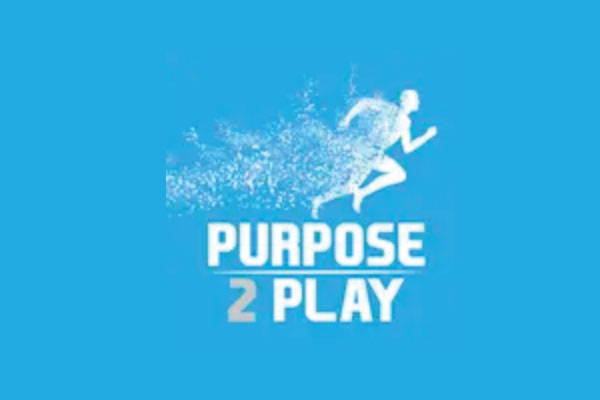What happens when doing a service for others turns into a permanent disservice for yourself?
Unfortunately, Ira Edwards, 39, knows first hand.
The Anchorage, Alaska resident was working as a park ranger in 2010 clearing leaning and hazardous trees on one of the ski trails at the Nancy Lake State Recreation area when he was crushed by a falling tree.
“I made a cut on the main trunk and that is where things went bad,” Edwards said. “The main tree trunk broke off of the stump and hit the ground. The top part broke off the trunk, and pushed the trunk at me like a flyswatter. I got hit across the shoulders and driven into the ground like a fencepost.”
The immediate result was a broken scapula, a dislocated shoulder, broken ribs, a busted collar bone, and a broken back at T-12-L1, which has made him a paraplegic from the waist down.
“Obviously, in hindsight, we would have put ten more straps on the tree, but I took the safety precautions that I thought were necessary,” Edwards said.
Edwards was life-flighted to a hospital in Anchorage, where he spent two weeks in the ICU, and then he traveled to world-renowened Craig Hospital in Denver for three months of specialized neuro-rehabilitation.
“I had a lot of friends that helped me out,” Edwards said after his stint at Craig Hospital. “That was a big thing for me. Honestly, the injury was not that bad for me. I had other challenges along the way. My ex-wife left me shortly after getting out of the hospital, so that was probably the biggest challenge that I had to get over. I had accepted that I was in a wheelchair, but that wasn’t the worst part.”
Always An Outdoorsman
Edwards, a soft-spoken type of guy who has adopted the pace of nature got into nordic skiing during his final year in high school.
“Honestly, it was to see the girls in spandex,” Edwards joked. “It was just another way to be outside in the winter.”
Edwards went on to compete at the University of Alaska – Fairbanks, and then raced semi-professionally for Rossignol, which is where he currently works part-time in their marketing department.
Edwards appreciated the two-sticked sport so much that he’s spent a good chunk of his life coaching nordic skiing from the junior level all the way to working with athletes from the US Ski Team.
So what would become of Edwards’ new life in a wheelchair?
His first day on an adaptive ski sent him back into a world of pain.
“I tore my rotator cuff and crashed really bad,” Edwards said. “It was not like skiing. My body didn’t have a lot of core stabilization. I hadn’t really learned how to do a lot still, so I probably wasn’t ready to give it a try. It had only been a year since I got hurt and I said, ‘I’ve got to do this.’ That first year was pretty tough. I crashed a lot. My friends said I probably spent more time skiing on my head than on my skis.”
Edwards didn’t have the same amount of atrophy on both legs. One leg had more muscle mass than the other, so there was about a 10-pound difference from one side to the other.
“After that first time, I decided to add some weights to balance me out,” Edwards said. “If that had happened initially, it would have made my life a lot easier I think.”
A New Approach to Snow
Edwards had to re-learn how to get onto a chairlift as well.
“With my alpine outriggers, I push off the tips and do a dip to lift my body on to the chair,” Edwards said. “Then I throw my weight forward to rock off the chair at the top. It’s not too bad actually. It’s just a lot of timing.”
Once Edwards got accustomed to all aspects of the sit ski, he got back into coaching, but it wasn’t at the college or high school level anymore.
“I consider myself a pretty good skier, but I’m not physically able to go as fast as they do,” Edwards said. “Now I’m coaching 6-10 year olds. When I’m sitting, I’m about their height, too.”
Edwards not only coaches nordic skiing for able-bodied athletes, but he also work with Challenge Alaska, which aims to improve the lives of people with disabilities through adaptive sports, therapeutic recreation, and education. Edwards helps with fundraising and occasionally takes a run or two with new skiers in the program. After all, he knows better than most that the real healing happens in nature.
As for competing in a sit-ski, Edwards said that’s never really been his goal.
“The guys that are able to compete have time and money to do so, and they have disabilities for sure, but they tend to have a lot more function than I have based on the level of injury handicap,” Edwards said.
Edwards is looking forward to yet another great season on snow, especially after breaking his femur last spring while racing at Arctic Man, an event in which skiers are towed by snowmobiles at high speeds. Edwards crashed in his sit ski going over 70 MPH and needed two corrective surgeries to fix and to clean up the leg up.
“I’ve dedicated a large portion of my life to helping others have fun,” Edwards said. “Since I got hurt, I got a lot of help, but since getting better, I’ve spent a lot of time trying to help others. I try to show others that everything is possible.”
Dwelling in possibility keeps life interesting, and in some cases, like Edwards’, it turns tragedy and into personal triumph.
For more great stories like this, check out our homepage.
Make sure to follow Purpose 2 Play on Facebook and on Twitter.



